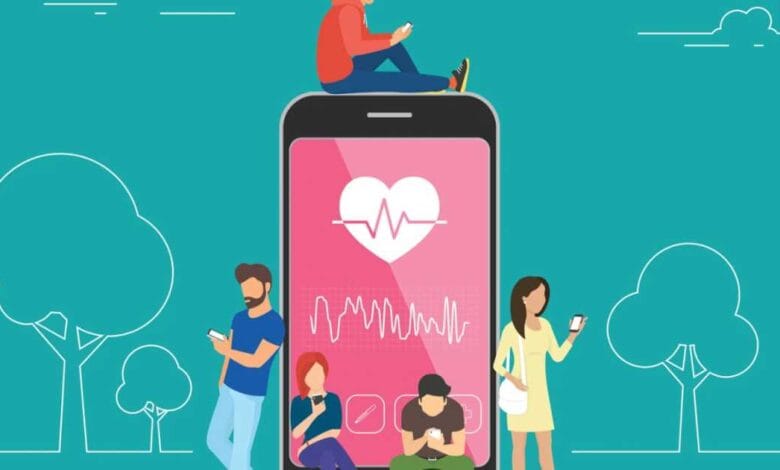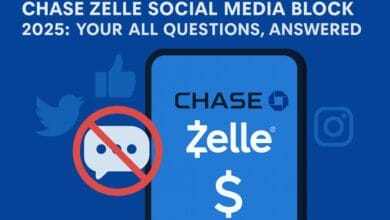
Social Media Health Campaigns for Impac tful Public Health Promotion
Social media is more than just status updates, memes, and selfies in today’s hyperconnected world. It has developed into a potent instrument that public health organizations use to swiftly, effectively, and frequently—and persuasively—reach large and varied audiences. Social media health campaigns are now an essential tool for encouraging healthy lifestyles, changing behavior, and even dispelling false information. However, what exactly makes these campaigns successful and how do they operate?
Let’s examine the methods and frameworks that enable social media health campaigns to be both feasible and effective.
The Growing Importance of Social Media in Public Health

The way that people share and receive health-related information has been completely changed by social media. Health messages can spread quickly and reach populations that may be hard to reach through traditional channels thanks to platforms like Facebook, Instagram, Tik Tok, and X (formerly Twitter). Organizations can better target their message to the appropriate audience by using campaigns that target users based on their demographics, interests, and behavior.
Here is a brief comparison between social media-based and traditional health campaigns:
| Aspect | Traditional Health Campaigns | Social Media Health Campaigns |
| Reach | Local or limited | Global, viral potential |
| Cost | High (TV, print, etc.) | Lower (organic or sponsored posts) |
| Targeting Specific Groups | Challenging | Precise targeting via data analytics |
| Speed of Delivery | Slower | Immediate |
| User Engagement | One-way communication | Two-way interaction |
| Feedback and Analytics | Limited | Real-time insights |
| Content Format Flexibility | Mostly static (e.g., posters) | Multimedia (videos, reels, lives, etc.) |
Public health campaigns now function differently as a result of this dynamic change in communication channels. Creating dialogues, trust, and communities around public well-being is now more important than simply spreading a message.
Elements of a Successful Social Media Health Campaign

Posting health facts is not enough to create an engaging and successful campaign. Common building blocks are frequently found in the most effective campaigns:
Focused and unambiguous messaging
The enemy of attention is ambiguity. Clear, action-oriented messaging such as “Stop the Spread,” “Get Tested,” or “Vax Up” are the foundation of the most successful campaigns. The language must be relatable to the intended audience and use a tone that conveys urgency without inciting fear.
Platform Selection and Audience Targeting
Not every campaign is appropriate for every platform. Would you like to discuss mental health with teenagers? Your best option might be TikTok. facilitating older adults’ access to vaccines? Facebook continues to rule that group. It’s crucial to know who you want to reach and where they spend their online time.
Utilizing Community Leaders and Influencers
Peer pressure is effective. When someone they respect or trust gives health advice, people are more likely to heed it. Including reputable voices lends credibility and relatability, whether it’s a national fitness icon or a local doctor with a following.
Timing and Consistency
The most effective health messaging is consistent. A single post won’t have much of an impact. Long-lasting effects are more likely to be achieved by campaigns that use consistent messaging over time and coincide with significant events like Breast Cancer Awareness Month or World AIDS Day.
Involvement and Bidirectional Communication
Interaction is one of social media’s most notable benefits. Q&A sessions, polls, shares, and comments enable two-way discussions that empower as well as inform. Health of the public
Examples of Impactful Health Campaigns on Social Media

Globally, some of the most well-known social media health initiatives have altered behavior:
- This Girl Can (UK): This campaign empowered women of all sizes and backgrounds by utilizing inclusive imagery and real stories to break down barriers that prevent women from exercising.
- Vaccines Work (UNICEF): This campaign helped fight vaccine hesitancy in communities around the world by utilizing compelling visuals, expert voices, and personal stories.
- Mental Health Awareness (Multiple Nonprofits): This campaign normalized discussions about anxiety, depression, and therapy by utilizing influencers and relevant personal stories.
Common Challenges and How to Overcome Them
Naturally, not all campaigns are successful or even go viral. Here are some typical pitfalls to avoid:
- Backlash and False Information: Content should always be supported by reliable sources. Be prepared to swiftly and courteously address untrue statements.
- Low Engagement: Encourage participation rather than merely informing. Make use of calls to action, like “Tag someone who needs to see this” or “Comment with your story.”
- Be mindful of cultural differences and refrain from making assumptions. Campaigns should be inclusive and culturally and locally appropriate.
Why Social Media Will Continue to Shape Public Health Promotion

Social media platforms will increasingly serve as a battlefield for community outreach, disinformation control, and health education as digital ecosystems grow. They provide public health practitioners with previously unheard-of opportunities due to their scalability, creativity, and real-time feedback capabilities.
However, using these platforms effectively calls for constant skill development, monitoring tools, and genuine community involvement—not just the occasional eye-catching post.
Final Thoughts
Social media health campaigns are now an essential part of contemporary public health promotion, not just an add-on tool. These campaigns have the ability to change attitudes, enhance health outcomes, and even save lives by fusing platform-specific targeting, strategic messaging, and real community engagement. However, success doesn’t just happen. It calls for preparation, cultural sensitivity, inventiveness, and a steady online presence.
FAQs
A social media health campaign: what is it?
A social media health campaign is a focused attempt to share medical information, encourage healthy habits, or involve communities in public health conversations through platforms such as Facebook, Instagram, or Tik Tok.
Why are public health social media campaigns so effective?
A: Compared to traditional media, they enable real-time interaction, accurate audience targeting, and the capacity to disseminate messages quickly and extensively at a reduced cost.
Is it possible for small organizations to conduct successful social media health campaigns?
A: In agreement. Small businesses can use community involvement, local influencers, or organic posts to produce highly targeted and captivating content even with tight budgets.
Which platforms are most effective for health campaigns?
A: This will depend on your target audience. LinkedIn for professional health awareness, Instagram and Tik Tok for younger users, and Facebook and reach.
How can the effectiveness of an online health campaign be evaluated?
A number of metrics, including reach, engagement, shares, comments, and link clicks, can provide valuable information. Community health behavior changes and survey responses are also important.
Do social media health campaigns take ethics into account?
A: Definitely. Maintaining trust requires cultural sensitivity, information accuracy, privacy protection, and sponsorship transparency.
How can misinformation on social media be addressed in public health campaigns?
A: By keeping an eye on comments, answering with reliable information, citing vetted sources, and collaborating with reliable voices to support truthful messaging.





